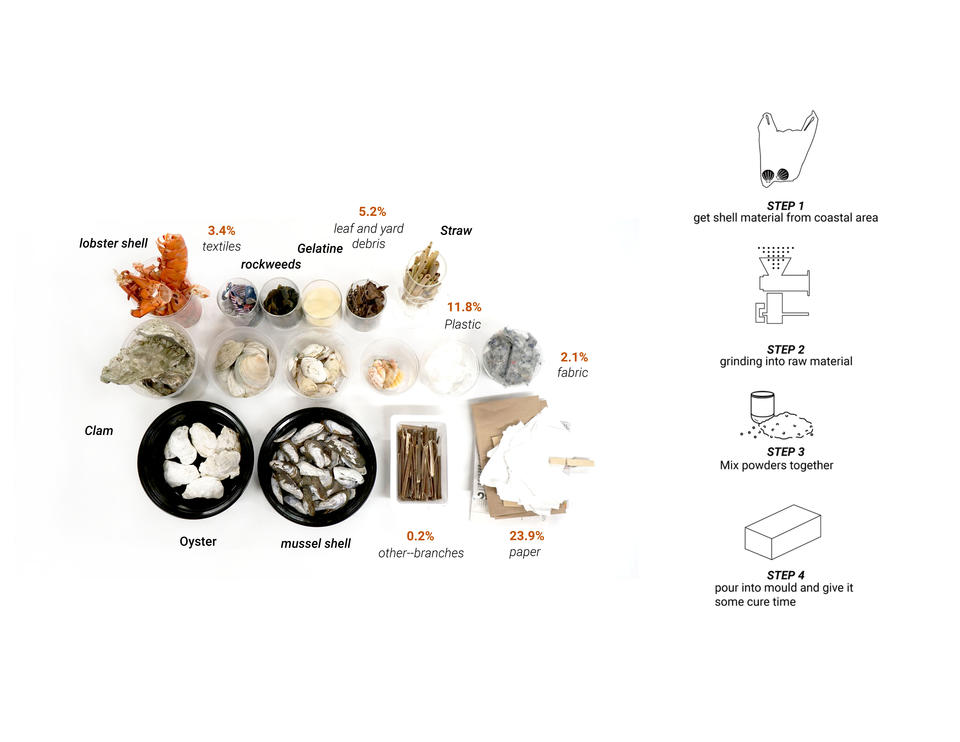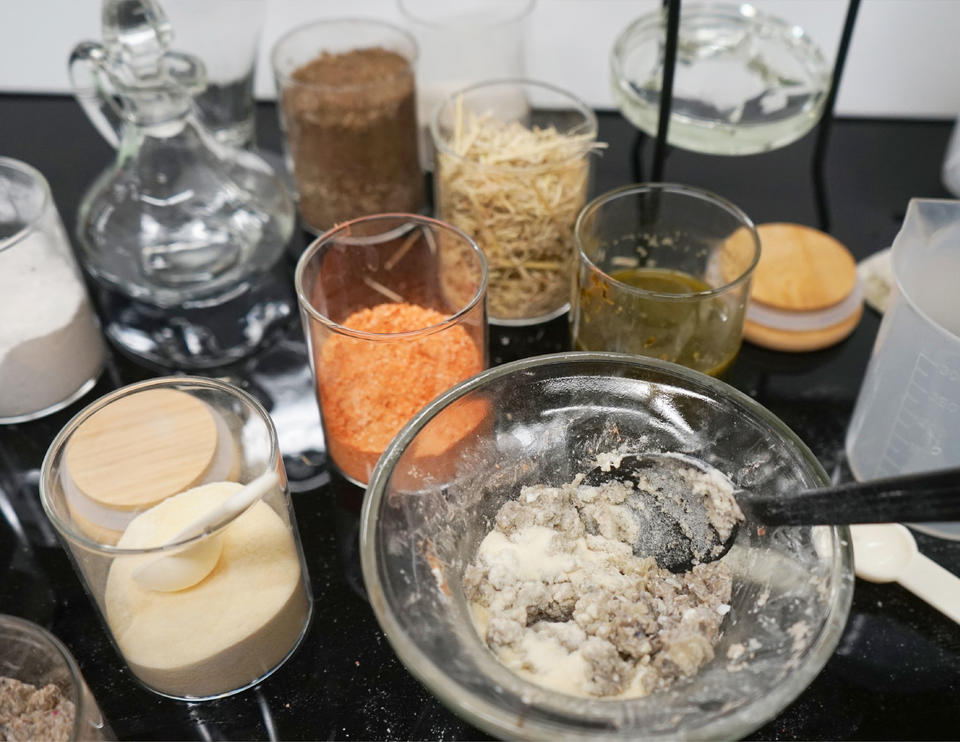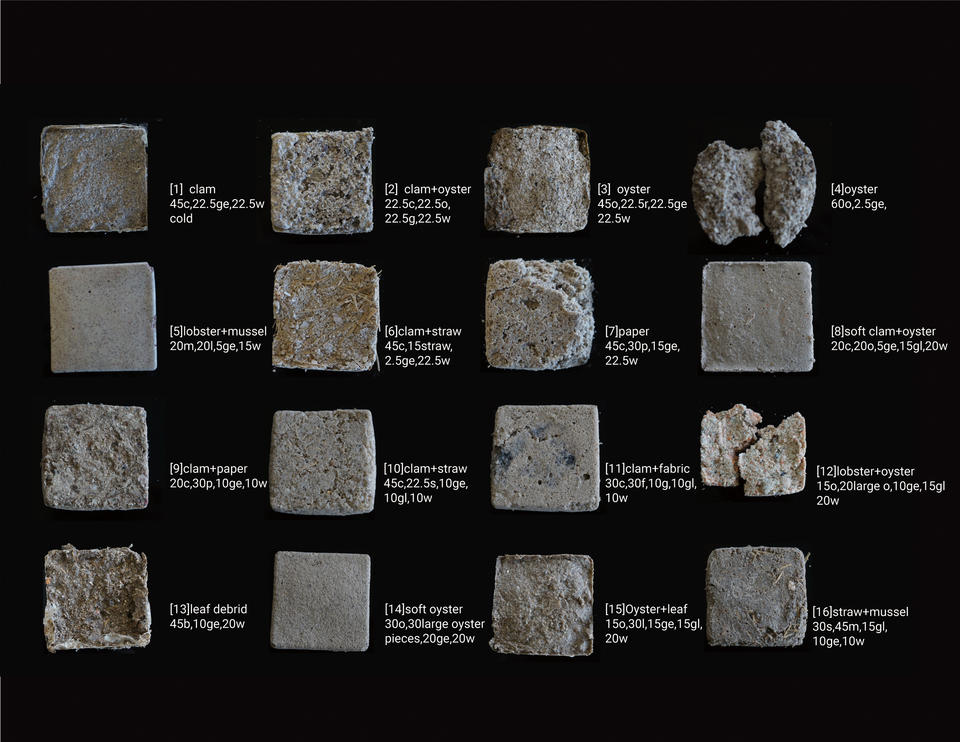Image

ABSTRACT
This thesis examines how issues related to the increasing erosion and inundation of coastal wetlands across New England due to sea-level rise and more frequent storms threaten public and private property as well as valuable natural resources in these important coastal ecosystems. Current coastal barrier solutions are often constructed with concrete hard revetments, which have limited effectiveness, and may exacerbate erosion. Furthermore, these solutions are also not able to support cradle-to-cradle design approaches.
In studying these issues and how they affect marine and coastal life, including human and non-human coastal communities, this thesis investigates alternatives to conventional concrete solutions. Material studies were conducted systematically to replace sand with other aggregates in the making of concrete, such as locally sourced seashells and other available coastal debris. The resulting eco-concrete mixes, developed with low-tech methods and techniques, may offer complimentary alternatives to the existing barrier protection systems by introducing flexibility, porosity, and weathering as fundamental qualities to host diversity, while still allowing for the barriers to offering protection to land from erosion. The thesis’ main argument, therefore, is that encouraging more flexible ways of building protection in highly dynamic coastal environments is not only essential to the preservation of coastal landscapes and their communities, but they may also suggest more democratic ways of constructing those protections collectively.
SAND & CONCRETE
Sand is the most Important Solid Substance on Earth.
It is the primary raw material that modern cities are made from.
Rapid urbanization and a growing number of behemoth infrastructure projects have increased the demand for sand. Sand are pressed into concrete and service to form landscape infrastructure.
Image
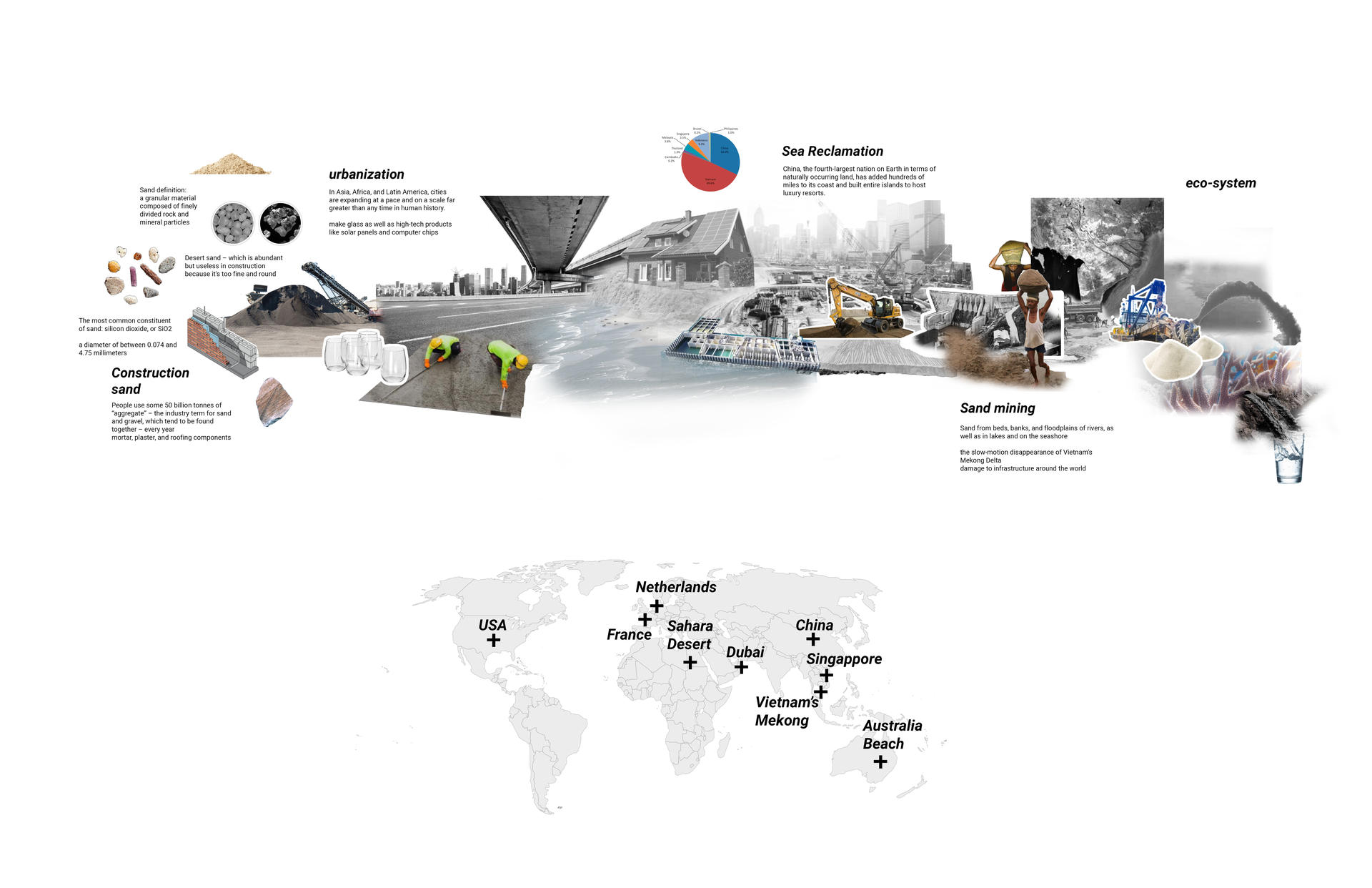
▲ Extensive sand mining physically alters coastal ecosystems, increases suspended sediments and causes erosion. The negative environmental consequences of overexploiting sand are already felt in poorer regions across the world.
Image
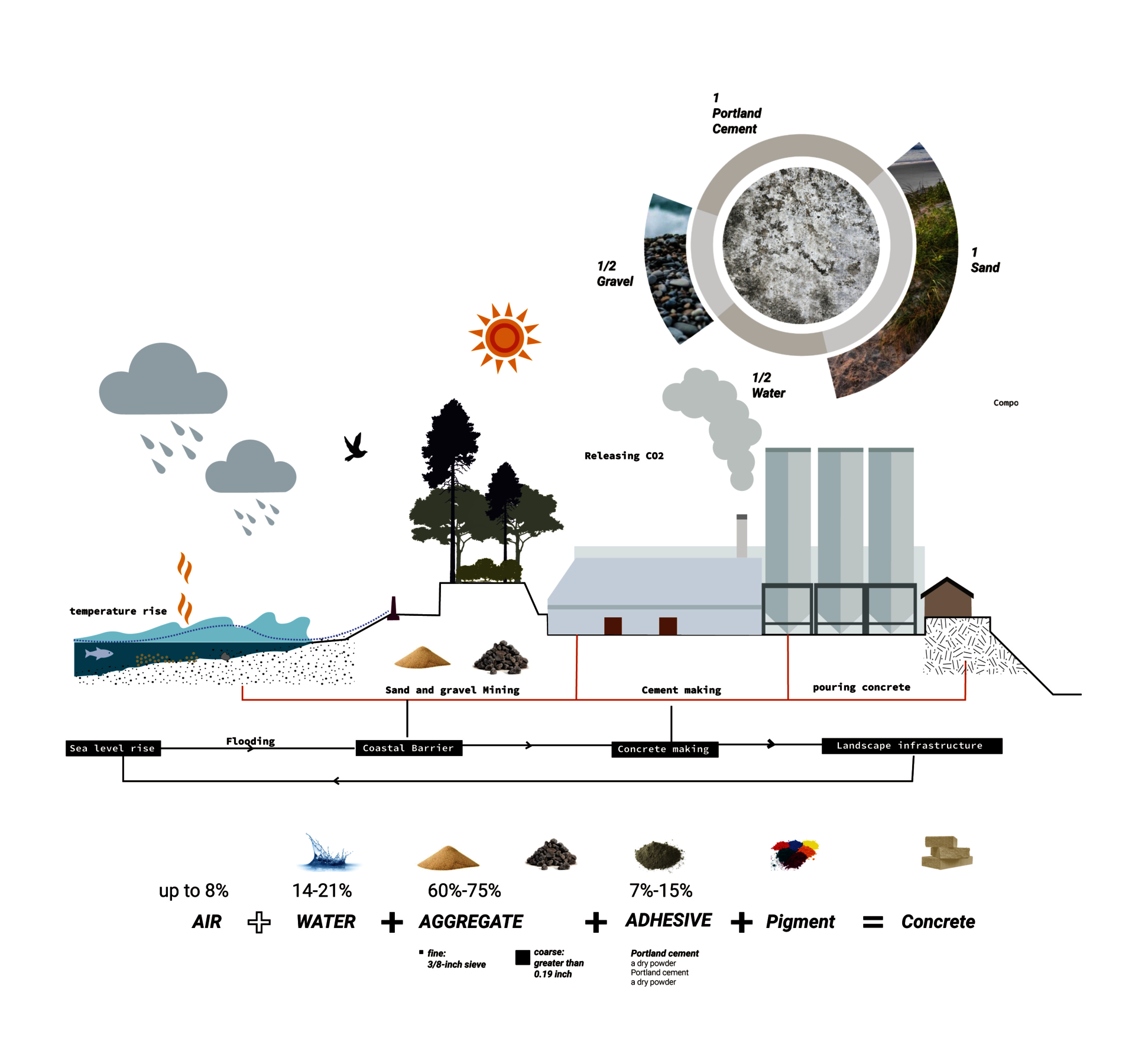
▲ Systematically think of the role concrete production plays in coastal issues.
Concrete, fundamental to human existence as it may currently be, is not a material able to support cradle-to-cradle design or to sustain any type of circular economy. This argument is supported by the following reasons:
1. Scarcity of raw material: sand and gravel
2. The environmental impact of concrete manufactory: releases an extreme amount of CO2
3.Concrete is a poor substrate for marine life in terms of biological recruitment and concrete infrastructure could not self-heal like other dynamic natural systems.
When using concrete, how could we keep on protecting the shoreline with a gentler touch in the environment? This is the potential for landscape architecture to position ourselves.
Materiality is the starting point to this thesis’ design process: these are materials that I see around me, things I can touch, feel, and interact with. The approach is to integrate low technology and local materials into processes to respond to the local environmental conditions. Common tools and local ingredients are adapted in the pursuit to create alternative aesthetics and processes for materials and making.
The aim is to envision a new bio-future for coastal landscapes for the next 10 years.
Explore a low tech approach to the democratisation of concrete
Erosion Control in Nantucket Island
Image

Nantucket is a small island with approximately 45 square miles, lying 30 miles off the southern coast of Massachusetts. The island is composed primarily of sandy debris left behind when the glaciers retreated around 15,000 years ago. Nantucket is a fascinating environmental microcosm in Southern Massachusetts. To protect the island from being eroded, a variety of coastal erosion structures and methods were explored. This thesis explores design approaches that do not necessarily intend to build up land on the coast and, even less, to reshape existing beaches completely. Instead, the attitude was to work with the complex, ever-evolving, and highly dynamic coastal environment in Nantucket Island.
These methods can be divided into two categories: hard and soft engineering structures. Each method has advantages and disadvantages depending on the nature of the method used, the location of installation, the materials used, the quality of installation, and the strength and direction of the onshore current.
Image
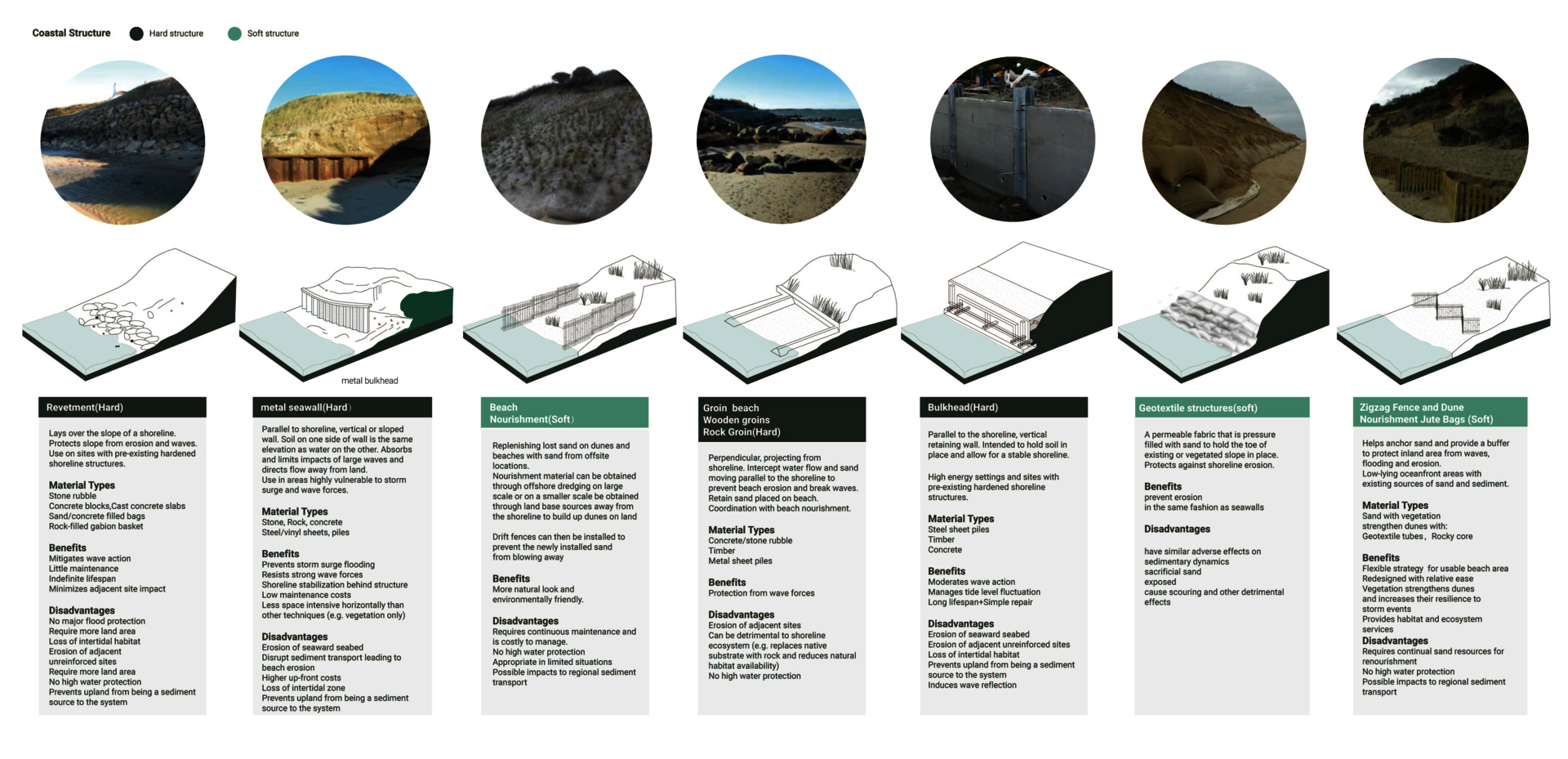
Image
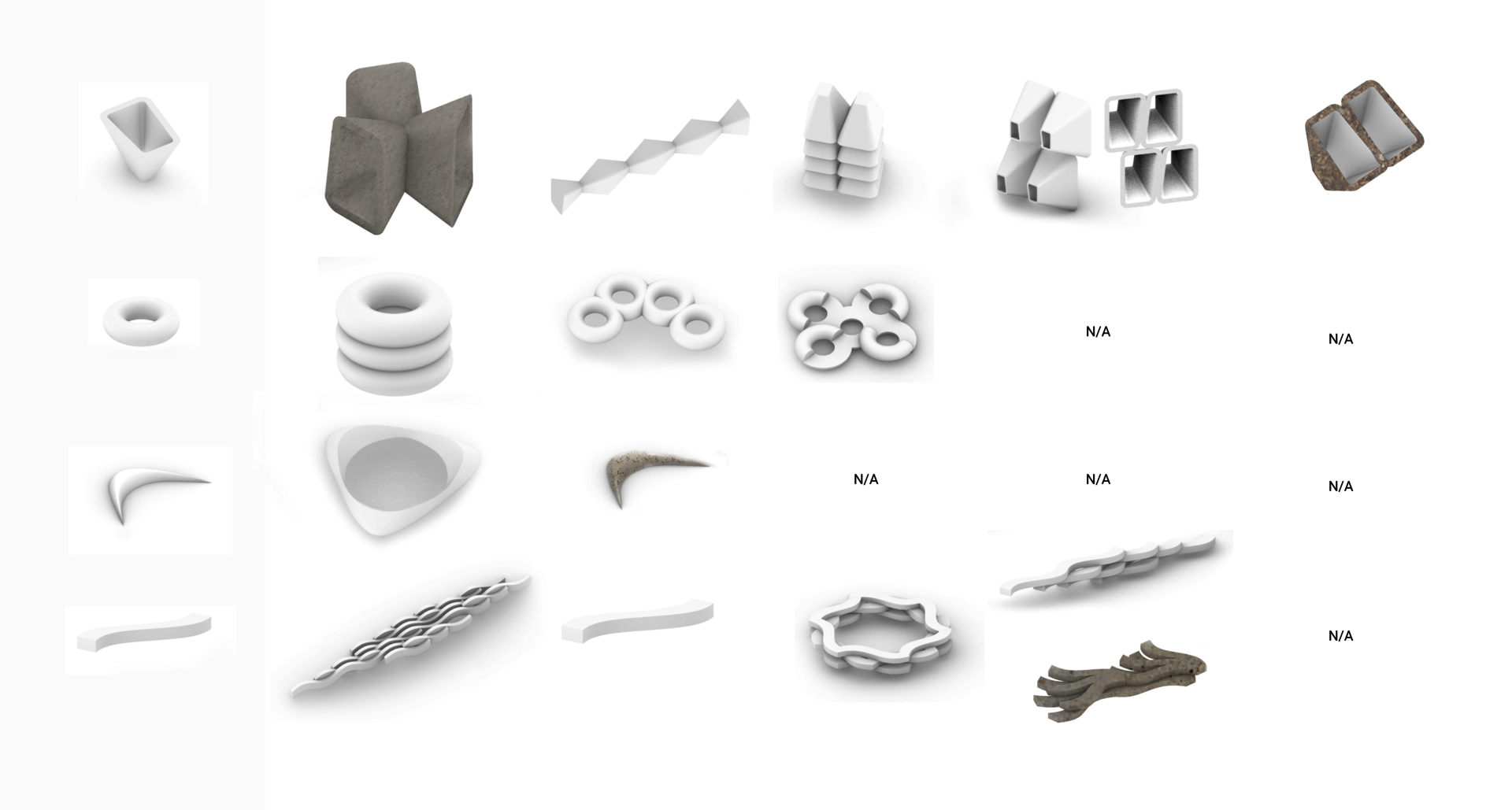
The design strategy includes the proposal of a cradle-to-cradle system, with a series of plug-in structures, which can also be described as coastal furniture due to their scalar relationship to the scales of the living communities in this area, including humans. It is suggested that these new structures can be prefabricated modules, which local inhabitants can eventually make at home and in their own communities. This proposal relates to the fact that the author conducted all of the material tests for new concrete mixes at home and with every day (non-professional) equipment. However, the prefabrication of these pieces as modules would certainly require their previous calibration with the help of specialized technicians, who could work closely together with the community.
Image
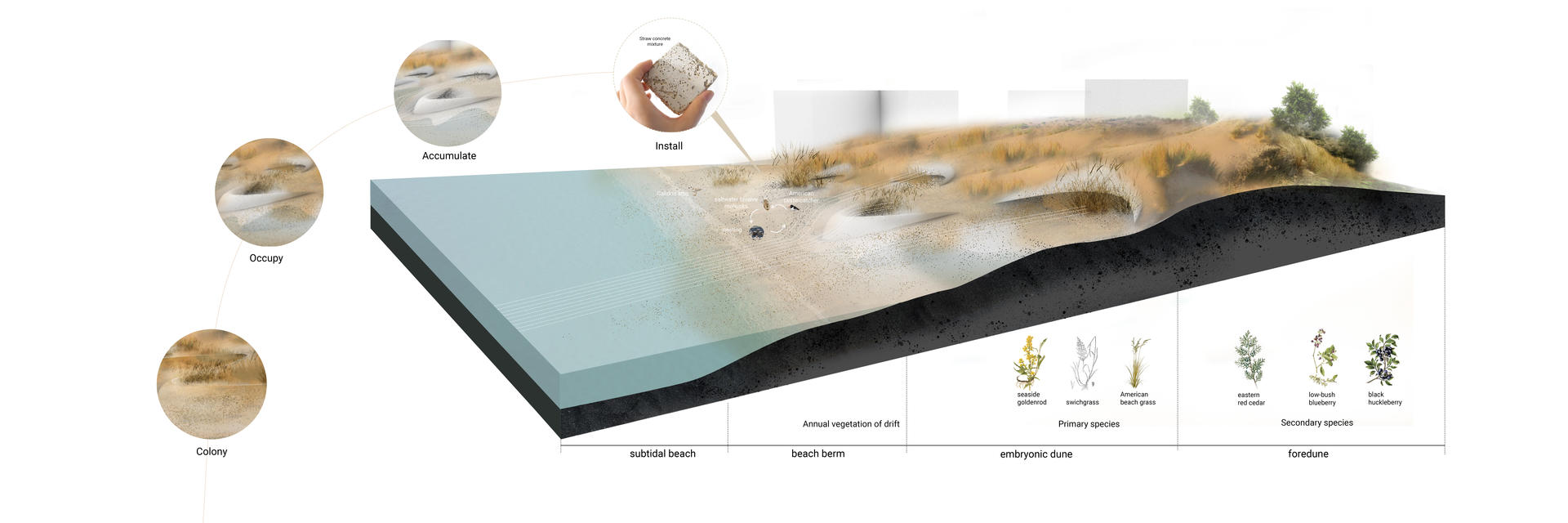
▲ zigzag fencing+sand dune: dart shape sand catchment
1. accumulate: a steady sea wind sweeping across the beach carries grains of sand inland. when its motion is interrupted by a sand catchment, the wind drops its burden of sand.
2. occupy beach grass seeds buried in concrete germinate. the shifting sands are anchored by cables of american beach grass. American beach grass can live in harsh environments.
3. colony: growing higher, broader, merging with other mounds, it becomes a hillock, a ridge—a dune.
Image
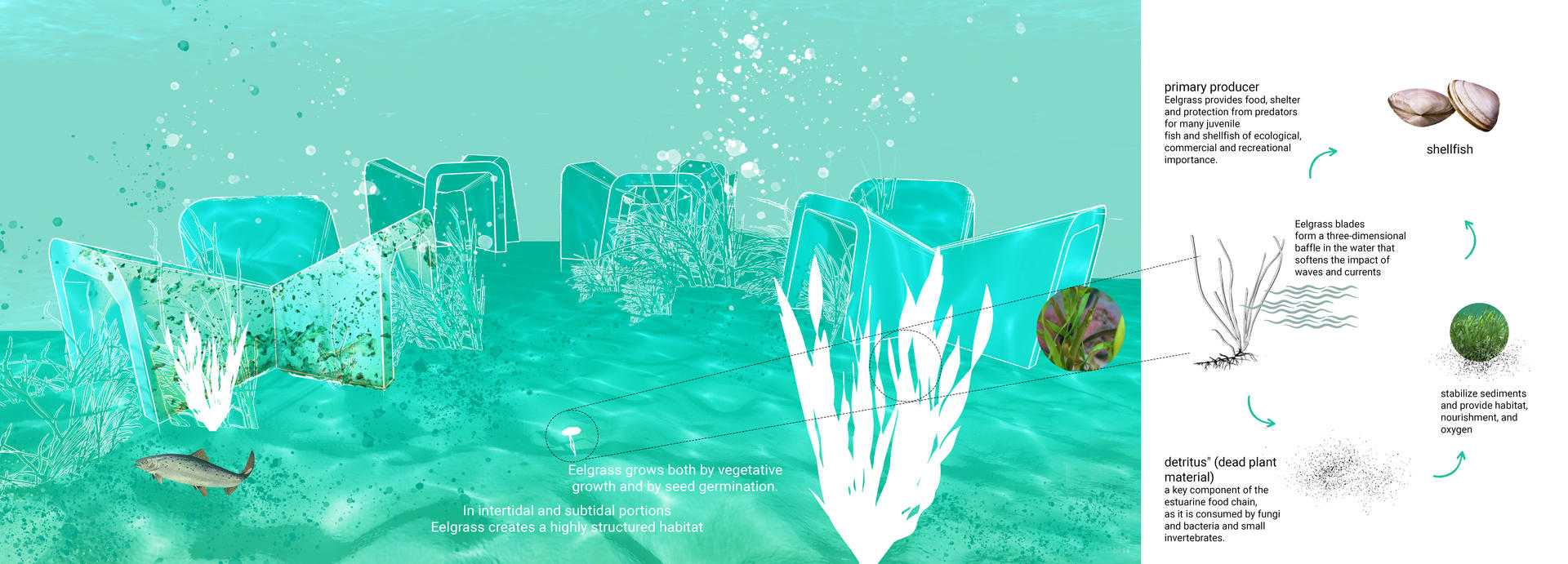
▲Eelgrass shelter: hard oyster shells
In shallow water, we graze eelgrass in a shelter where the seeds could survive and germinate. Eelgrass as the primary producer provides food, shelter, and protection from predators for many fish and shellfish. It stabilizes sediments and provides nourishment and oxygen.
Image
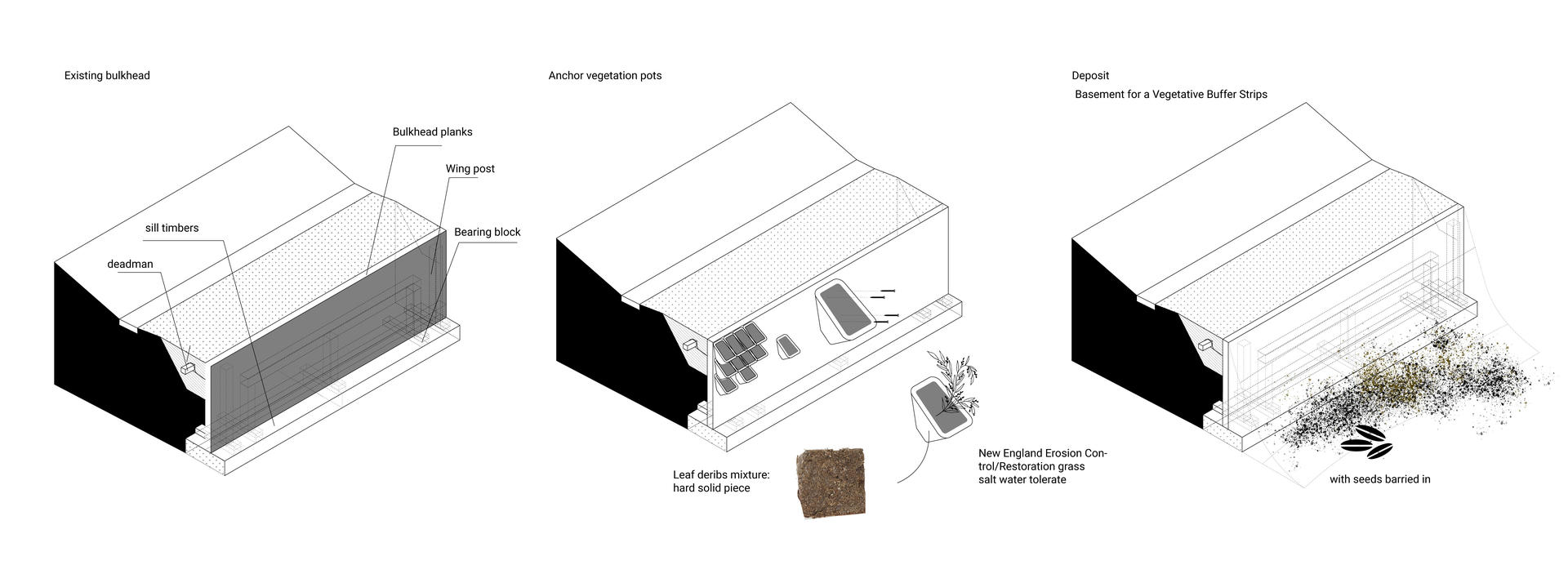
▲Bulkhead: Leaf debris pots
The installation of the bulkhead resulted in a loss of the intertidal zone. Leaf debris pots will be attached to the existing bulkhead. Salt-water tolerant plants can grow in pots. As time goes by, all pots crash down and become a basement for a new intertidal zone.

